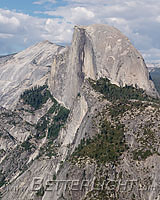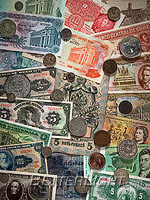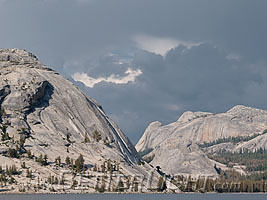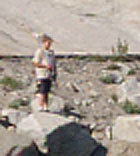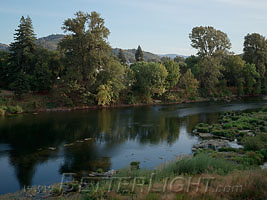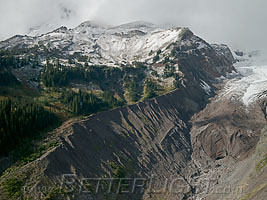
|
High Resolution Direct Digital Photographs
made with BETTER LIGHT LARGE FORMAT SCANNING BACKS |
|||||||
|
A Better Light scanning back can provide the shortest and most direct path from an original subject to a high-quality photographic image. The camera lens and image sensor are the only optical elements involved, and the full-color RGB data from the scanning back’s trilinear sensor does not require any processing to complete the picture or reduce unwanted artifacts. No other image capture system utilizes such a straightforward, pristine method of recording a photograph, which is why Better Light scanning backs have been the choice of discerning photographers and institutions worldwide for more than a decade.
These unique examples of this state-of-the-art technology were photographed by Mike Collette over the past ten years using various models of Better Light digital scanning backs, in conjunction with a variety of 4x5 view cameras and lenses. The large file sizes from these devices have always been challenging to handle, but improvements in Internet data transfer rates, coupled with intelligent image viewing software from www.zoomify.com, now let us offer these full-resolution images for detailed examination and enjoyment via the Internet. The Zoomify image viewer uses intelligent data transfer technology to deliver only the requested portion of an image at the requested magnification, to minimize the amount of data that needs to be transferred. Multi-stage image compression is utilized to further improve transfer speeds without introducing obvious artifacts. Nonetheless, a high-speed Internet connection is strongly recommended for the best viewing experience, since each image contains many megabytes of data when viewed at full resolution. One of the more interesting aspects of examining high-resolution landscape photographs like the ones presented here is that the viewer can easily absorb more information about a place through the photograph than is possible even by standing in the same location as the camera and using binoculars to survey the scene. In this regard, using a digital viewing system like Zoomify that allows close inspection of the digital image data can be superior to viewing a large printed image, and often more convenient. These images are Copyright © 1997-2006 by Better Light. Everyone is welcome to examine and enjoy the images on these pages, but reproduction of any portion of any of these images in any form without the express permission of the Copyright holder is prohibited. CLICK ON ANY PHOTO to examine the full resolution photograph.
|
|||||||
|
|||||||
This image is from my last outing with a Dicomed scanning back, just before the second-generation Better Light systems became operational. Taken from Glacier Point with a moderate telephoto lens, the late-afternoon sunlight provides outstanding delineation of the subtle textures and colors of this well-known granite monolith. 
This may not be the BIGGEST image of Half Dome that you can find on the Internet, but this is probably among the HIGHEST QUALITY images of Half Dome that anyone can produce, even a decade after its original capture in 1997. While some recent approaches to “gigapixel” photography utilize carefully focused and scanned ultra-large-format film, or hundreds of DSLR images tiled together to produce huge digital image files, the actual information contained in these well-intended photographic projects often isn’t as good, either in detail and clarity or in color and tonal accuracy, as the information that can be captured using a (ten year old) digital scanning back. Photo on the right is a tiny segment of the Half Dome photo enlarged to 200% to show several climbers working their way up the mountain side...see if you can find them in the Zoomify image. |
|||||||
|
|||||||
| Return to Top | To demonstrate the capabilities of the first Better Light model 8000 scanning back, colorful international currencies and coins from a private collection were arranged on a small table, with the camera directly overhead. The camera and subject were carefully Zig-Aligned for precise parallelism to keep everything sharp at a fairly wide lens aperture, which provided optimum optical resolution. One Lowel DP was fitted with a spun glass diffusion filter to provide general illumination from one side, while the other DP was focused and raked across the subject surface from the top of the image. In addition to providing interesting contrast to the paper money, the coins also kept the bills from curling under the fairly bright tungsten illumination, which allowed optimum exposure conditions and a short overall scan time. |
||||||
|
|||||||
| Return to Top | This still life image contains subject elements that I have been using since the early Dicomed days, including the same dried flowers, which have held up remarkably well. This tabletop setup was lit using two Lowel DPs with spun glass diffusion filters -- a main light positioned close and to the left, plus a weaker fill light from the right. This scene was originally scanned at the full 6000 by 8000 pixel dimensions of the scanning back, but was subsequently cropped to fit on a CD along with other Better Light examples. |
||||||
|
|||||||
| Return to Top | We spent an afternoon along the shore of Tenaya Lake in Yosemite’s high country (elevation 8,150 feet), watching ominous-looking clouds accumulating to the east. Late afternoon sunlight brings out subtle textures and colors in the granite mountains, for a much less monochromatic rendition of this region than is often portrayed. Highway 120 runs along the lake shore, and several cars can be found passing through the scanning camera’s view. More parked cars and beach visitors (but not many swimmers…) can be seen at the far end of the lake, under the trees. See if you can find the boy on the rocks, shown above in a segment enlarged to 200%. |
||||||
|
|||||||
| Return to Top | I had just received a new Cooke PS945 soft-focus lens a few days earlier, and found an opportunity to try it out in my back yard after a light rain the previous evening. This is a relatively close-up image for a 229mm focal length lens, and I used the lens’ widest aperture setting for the most pronounced soft-focus effect, so upon close inspection much of this image is, not surprisingly, out of focus. However, the delightful softness produced by the PS945 is perfectly rendered by a Better Light scanning back, perhaps better than was ever possible with film, to yield a unique optical result not possible from any amount of digital fiddling. This image is nothing special overall, but the close-up detail in many areas is almost magical. |
||||||
|
|||||||
| Return to Top | This was the view from the deck at the rear of our motel room in Roseburg, just before the sun disappeared behind nearby Mt. Nebo. A strong wind constantly disturbed the trees in this scene, but the resulting colored motion artifacts aren’t as bad as I had anticipated, while the soft evening light and gentle tranquility of this scene are perfectly recorded. (No attempt was made to reduce or hide any motion artifacts caused by the moving leaves, branches, or water.) |
||||||
|
|||||||
| Return to Top | Here is the same scene as above captured 20 minutes later, after the sun dropped behind a nearby mountain and eliminated the warm subject lighting. I have been getting into the habit of installing the scanning back’s normally-required infrared-blocking filter on the outside of my camera lens, so I can easily remove this filter without disturbing camera focus when I want to capture an infrared image. Even with additional infrared energy reaching the image sensor, the rapidly falling light levels on this scene required almost as much exposure as the normal color image. I always try to remember to do a custom Neutral Balance before capturing a color infrared image, since infrared “colors” are generally rendered as muted pastels that can easily be overcome by an improper neutral balance. Unlike the fuzzy, grainy rendition and wild exposure variations commonly associated with infrared film, infrared images from a scanning back can have every bit as much sharpness and grace as their normal color counterparts. While it’s true that most lenses aren’t necessarily corrected for infrared focus, you couldn’t tell by looking at this particular image, which was captured using the same (visible) focus as the normal color image twenty minutes earlier. In fact, distant subjects are often rendered more sharply in an infrared image, since the longer infrared wavelengths tend to cut through atmospheric haze better than visible wavelengths (particularly blue). Note the improved sharpness in the power lines and towers along the distant hilltop of the infrared image, compared to the color image of the same subject (top center in both images). |
||||||
|
|||||||
I had never been to Mount Rainier before, so was especially pleased to find several great photo sites on our first visit, including this view from the Nisqually Glacier overlook. We encountered some light rain and hail during this excursion, and the top half of the mountain refused to show itself all afternoon, although the low clouds and constantly-changing shadows added some mystery to the scene. The camera is at approximately 5,200 feet elevation, and the landscape across the glacial canyon ranges from 5,000 to 7,000 feet in elevation before disappearing into the clouds. Mount Rainier rises another 7,000 feet above this view, and Nisqually Glacier originates near the summit and extends all the way to the colorful snout pictured here. |
|||||||
